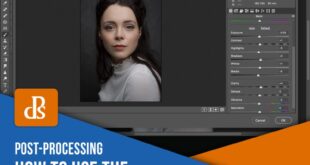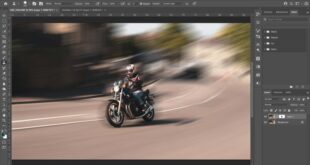Ever wished you could magically transport your photos back in time , giving them that nostalgic, instantly-classic Polaroid vibe? Yeah, me too! This step-by-step guide to creating a Polaroid effect in Photoshop is your passport to that retro dream. Forget fiddling with expensive filters or struggling with complicated apps; we’re diving headfirst into mastering this iconic look, unlocking the secrets to perfectly imperfect edges, vibrant colors, & that signature Polaroid grain. Learning this will elevate your Instagram game , impress your friends , & unleash your inner vintage photographer – seriously, it’s easier than you think!
Achieve that Perfect Polaroid Photoshop Effect: A Step-by-Step Tutorial
Meta Description: Want to give your photos that iconic Polaroid look? This tutorial shows you how to easily create a stunning Polaroid Photoshop effect, complete with realistic borders and vintage filters! Learn the tricks of the trade today.
Introduction: Capturing the Nostalgia of Polaroid Photography
Ever wished you could instantly replicate that charming, slightly faded, and uniquely bordered look of a classic Polaroid photo? Well, you’re in luck! This Polaroid Photoshop tutorial will guide you through creating a stunning Polaroid effect, transforming your digital images into vintage masterpieces. We’ll cover everything from adding realistic borders to applying subtle vintage filters, so grab your Photoshop and let’s get started! I remember getting my first Polaroid camera – the thrill of watching the image slowly develop was magical! This tutorial aims to recapture that magic digitally.
Gathering Your Assets: Images and Photoshop
Before we dive into the fun part, let’s make sure we have everything we need.
- Choose your image: Select your favorite photo! High-resolution images generally produce the best results. A slightly underexposed image can sometimes work even better for that vintage feel.
- Adobe Photoshop: Ensure you have Adobe Photoshop installed and ready to go. Most recent versions will work perfectly. This tutorial won’t cover the basics of Photoshop navigation, but if you’re a beginner, there are tons of excellent resources online to help you get started!
Step-by-Step Guide: Creating the Polaroid Effect in Photoshop
Step 1: Importing Your Image and Creating a New Layer
1. Open Photoshop and import your chosen image.
2. Go to Layer > New > Layer to create a new layer. This will keep your original image untouched, allowing for non-destructive editing. Think of it like having a safety net – you can always go back to the original if needed!
(Insert screenshot showing the steps)
Step 2: Adding the Polaroid Border
This is where the fun begins! We’ll create a Polaroid border.
1. Select the Rectangular Marquee Tool (M).
2. Create a selection slightly larger than your image, leaving some space for the border.
3. Go to Edit > Fill. Choose “White” as the fill color. This creates the base of our Polaroid.
4. Now, let’s create that iconic Polaroid border. We can do this a few ways. One simple method is using the Rounded Rectangle Tool (U). Experiment with different corner radii to achieve the perfect Polaroid look. You can also try manually creating the border shape using the Pen Tool (P) for more intricate designs.
5. Fill the border with a suitable color – a creamy off-white or even a light beige can work beautifully.
(Insert screenshots showing different border creation options and final result)
Step 3: Applying Vintage Filters and Adjustments
Time to give our photo that authentic Polaroid feel.
1. Select your original image layer.
2. Go to Image > Adjustments > Hue/Saturation. Slightly decrease the saturation to give it a more muted, vintage look.
3. Next, play around with the Levels (Ctrl+L or Cmd+L) or Curves adjustments to fine-tune the contrast and brightness. A slight increase in contrast and a reduction in highlights can add depth.
4. For an extra touch of authenticity, add some subtle grain. You can find grain textures online or use Photoshop’s built-in Noise filter (Filter > Noise > Add Noise). Don’t overdo it though – a little grain goes a long way!
(Insert screenshots showing adjustments made to hue, saturation, levels, and grain)
Step 4: Adding Subtle Shadows and Highlights
To make the Polaroid effect even more realistic, let’s add some shadows and highlights.
1. Create a new layer above the image layer.
2. Use a soft brush with a low opacity (around 10-20%) to paint subtle shadows around the edges of the photo, mimicking the way light falls on a real Polaroid.
3. On a new layer, use a similar approach to add highlights, focusing on the corners and areas where light would naturally reflect.
(Insert screenshots showing shadow and highlight additions)
Step 5: Final Touches and Export
Almost there!
1. Sharpen your image slightly using the Unsharp Mask filter (Filter > Sharpen > Unsharp Mask). Be subtle; over-sharpening can make the image look unnatural.
2. Make any final color adjustments as needed.
3. Finally, save your image! Choose a high-resolution format like JPEG or PNG, depending on your needs.
(Insert screenshots showing final touches and export options)
Advanced Techniques: Refining Your Polaroid Photoshop Effect
Once you’ve mastered the basics, there’s a world of possibilities!
- Textures and Overlays: Experiment with different textures and overlays (easily found online) to enhance the vintage feel. A slightly textured paper overlay can add a lot of character.
- Custom Border Designs: Create your own unique Polaroid border designs using custom shapes or even hand-drawn elements. Let your creativity flow!
- Layer Masks: Use layer masks for precise control over your effects. This is a powerful technique that allows you to selectively apply effects only to specific areas of your image.
Frequently Asked Questions (FAQ)
- Q: What version of Photoshop do I need? A: This tutorial works with most recent versions of Photoshop.
- Q: Can I use this technique on other image editing software? A: While the specific steps may vary, similar techniques can be adapted to other software like GIMP.
- Q: Where can I find free vintage textures to add to my photos? A: Many websites offer free texture packs; a simple Google search will reveal many options.
Conclusion: Your Polaroid Photoshop Journey Begins!
Now you have the skills to create stunning Polaroid effects in Photoshop! Experiment with different settings and techniques to achieve your perfect vintage look. Share your creations with us using #PolaroidPhotoshopEffect. Happy editing! Remember, the key is to have fun and let your creativity guide you. Don’t be afraid to experiment – that’s how you discover your unique style!
 Alveo Creative Blog Guiding users through techniques for enhancing images, retouching portraits, and mastering popular editing software
Alveo Creative Blog Guiding users through techniques for enhancing images, retouching portraits, and mastering popular editing software



